Introduction
Have you ever thought about the curious evolution of the words “awful” and “awesome”? Once upon a time, they both shared a root meaning tied to the powerful emotion of awe—an intense feeling of reverence, wonder, and, occasionally, fear. To be “awful” meant to inspire awe and, in some cases, even admiration. Yet today, “awful” has taken on a decidedly negative meaning, while “awesome” retains its positive sense of wonder. This paradox perfectly encapsulates the experience of awe. It can make us feel overwhelmed, sometimes even frightened, but also deeply moved and inspired. And this is precisely where the concept of the sublime comes in—a feeling we often seek, knowingly or unknowingly, when we travel.
The Sublime
When we stand at the edge of a vast canyon, gaze up at towering cathedral spires, or witness the ethereal beauty of the Northern Lights, we experience a mix of admiration, wonder, and a bit of something more: the sublime. These moments can transform our travels from routine vacations into unforgettable, awe-inspiring journeys. But as much as the sublime can elevate a trip, it can also overwhelm us. Too much awe and what begins as an incredible experience can turn into sensory or emotional overload, leaving us feeling more drained than inspired.
In this post, we’ll explore how to strike the right balance between the “awesome” and the “awful” in travel by tapping into the power of the sublime. We’ll dive into the history and meaning of the sublime, from its roots in philosophy to its practical application in modern travel. By understanding the different types of sublime experiences—whether in nature, human-made structures, or liminal spaces that blend the two—you’ll be able to seek out awe-inspiring moments on your journeys while ensuring they remain meaningful and manageable.
We’ll also look at practical ways to incorporate these moments into your travels, offering guidance on how to find balance so that your awe-inspiring experiences remain memorable for the right reasons. By the end of this post, you’ll be equipped with both the inspiration and the tools to make your next trip truly sublime.
The Etymology and Meaning of “Awful” and “Awesome”
Awful
The word “awful” didn’t always describe something unpleasant or terrible. In fact, it once held a positive connotation, meaning “full of awe” or “inspiring awe.” To be “awful” was to evoke deep reverence, wonder, or even a touch of fear in the face of something grand or magnificent. In earlier centuries, people might have described a towering cathedral, a majestic mountain, or a powerful king as “awful” in the sense that these things inspired respect and admiration mixed with a sense of awe. Awe, in this context, was something to be revered, and those things that provoked it were powerful and moving.
Over time, however, the meaning of “awful” began to change. As the sense of awe became more associated with fear or dread, the word’s meaning shifted to reflect negative emotions. Instead of describing things that inspire admiration, “awful” came to refer to things that were fearsome in a purely negative way—things that evoked terror or disgust rather than wonder. By the 19th century, “awful” had solidified its modern meaning of something extremely bad or unpleasant. Today, when we describe an experience as “awful,” we’re usually referring to something that was deeply unpleasant, even repugnant. The original sense of awe—something that could inspire both wonder and fear—faded away as “awful” became synonymous with the undesirable.


Awesome
In contrast, “awesome” has retained its positive connection to awe. The original meaning of “awesome” was quite similar to that of “awful.” It described something that inspired awe, wonder, and reverence. Like its counterpart, “awesome” once described something grand and impressive, something that left one feeling humbled by its magnitude or beauty. However, as language evolved, “awesome” took on a more purely positive connotation, losing much of the fear or dread that could be associated with awe. Instead, it became a word to describe things that are overwhelmingly good or impressive.
In modern usage, “awesome” has become a catch-all term for anything extraordinary, inspiring, or just plain cool. It has been somewhat diluted by casual conversation. Nowadays, we might describe everything from a delicious meal to an exciting movie as “awesome.” Despite this overuse, the term still holds a fundamentally positive association, connecting back to its origins in the experience of awe.
Comparison and Paradox
The evolution of these two words, “awful” and “awesome,” presents an interesting paradox. Though both stem from the same root—awe—they’ve taken on radically different meanings. While “awful” now signifies something terrible or fear-inducing, “awesome” continues to represent the inspiring and extraordinary. This divergence highlights the complexity of awe itself, an emotion that can be both positive and negative, depending on how we experience it. Awe can overwhelm us, leaving us feeling insignificant or frightened, but it can also uplift us, filling us with wonder and inspiration.
This duality lies at the heart of the sublime, an experience that blends admiration and fear, beauty and terror. When we travel, we often seek out the sublime, whether in nature, art, or grand structures. In fact, many travellers may not fully realize that they are drawn to destinations that provide sublime experiences—whether it’s a mountaintop vista, the powerful expanse of the ocean, or the architectural grandeur of a centuries-old cathedral. It’s no accident that so many travellers gravitate toward places that evoke awe, intentionally or not. Even the pursuit of thrilling adventures like extreme sports or hikes into the wilderness can be seen as an attempt to tap into the power of the sublime, seeking out moments that make us feel small yet profoundly alive.
The Sublime—A Condensed Exploration
The sublime is a feeling of awe and wonder that stirs something deep within us—a sense of admiration mixed with just a hint of fear or discomfort. This experience arises when we are faced with something so vast, powerful, or beautiful that it overwhelms our senses and forces us to confront our own smallness in the face of greatness. Throughout history, philosophers, from Edmund Burke and Immanuel Kant to Joseph Addison and Jean-François Lyotard, have mused on the nature of the sublime. While their interpretations vary, they agree on key elements that define the sublime: vastness, power, and emotional impact. These traits combine to create an experience that is at once humbling and uplifting, frightening yet invigorating.
At its core, the sublime is about being confronted with something beyond our comprehension or control. Whether it’s the majesty of towering mountains or the intricacies of a cathedral’s architecture, the sublime makes us feel small in the face of something far greater. It evokes a mixture of admiration and awe, even as it challenges our understanding of beauty and the natural world. The sublime engages both our senses and our emotions, often in ways that words cannot fully capture.
Key Characteristics of the Sublime
- Vastness: The sublime is often triggered by something immense—whether a landscape that stretches to the horizon or a structure that soars to the heavens. This sense of vastness can be both physical and metaphorical, reminding us of the universe’s boundless nature.
- Power: There’s a sense of overwhelming force behind the sublime. Whether it’s the raw power of nature or the impressive achievement of human engineering, the sublime demands respect and reverence.
- Emotional Impact: The sublime stirs deep emotions, mixing pleasure with a sense of awe and admiration with a hint of fear. It can leave us feeling simultaneously humbled and inspired, transformed by the experience.
When it comes to travel, the sublime plays a significant role. Travellers often seek out experiences that connect them to something bigger than themselves. Whether consciously or not, they are drawn to places that evoke a sense of awe and wonder—locations where vast landscapes, grand architecture, or remarkable cultural monuments create moments of deep emotional resonance. These experiences are not just about witnessing beauty but about confronting the sublime and letting it transform their perception of the world and their place within it.
The Natural Sublime

The natural sublime is found in the awe-inspiring landscapes and natural phenomena that overwhelm us with their vastness and beauty. These are the places where nature’s power and scale take centre stage, reminding us of how small we are in comparison. Standing at the edge of a vast canyon or watching the sky light up with the aurora borealis evokes a sense of reverence as we are enveloped in nature’s grandeur.


Take, for example, the Grand Canyon in the United States. This immense geological wonder stretches for miles, and as you stand on its rim, it’s impossible not to feel a sense of awe at the sheer scale and depth of the landscape. The Northern Lights, visible in places like Scandinavia or Canada, offer another kind of natural sublime experience. The dancing lights in the sky are ethereal and otherworldly, inspiring a sense of wonder at the mysteries of the universe. For the more adventurous, experiences like tornado chasing in Oklahoma or cage diving with Great White Sharks in Australia can provoke awe mixed with a touch of fear as travellers come face-to-face with the raw power of nature.
The Human-Made Sublime

The human-made sublime emerges from awe-inspiring creations that represent the pinnacle of human achievement. Grand cathedrals, ancient pyramids, and monumental structures evoke admiration for the ingenuity, creativity, and determination that went into their construction. When we stand before these human-made marvels, we are not just appreciating their beauty—we are confronting the grandeur of what humans are capable of creating.

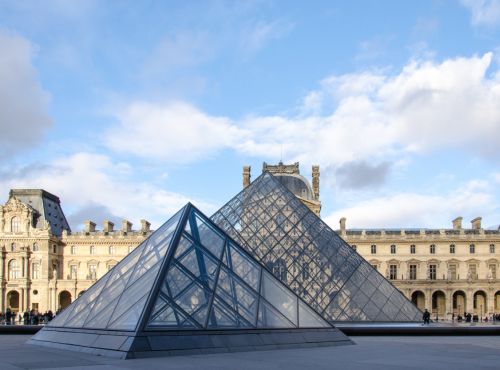
The towering spires of Cologne Cathedral in Germany, for instance, are a prime example of the human-made sublime. As you gaze upward at the intricate Gothic architecture, the sheer scale and complexity of the structure evoke awe. The Great Pyramids of Egypt, with their colossal size and ancient history, similarly inspire a sense of wonder at how such monumental structures were built by human hands so long ago. Yet, while these experiences can be profoundly moving, there’s also a potential for overwhelm, particularly in settings like museums. Visitors to the Louvre or Prado may experience “museum fatigue,” a type of sensory and emotional overload when faced with too many sublime works of art at once. This phenomenon can be seen as a “surfeit of the sublime,” where the sheer number of awe-inspiring creations becomes overwhelming, dulling the impact of each individual masterpiece.
The Liminal Sublime
The liminal sublime represents a fusion of nature and human craftsmanship, where the boundaries between the two blur to create something uniquely awe-inspiring. These are the places where human ingenuity has worked in harmony with the natural world, enhancing rather than overpowering its beauty. The result is a hybrid experience that evokes awe through the blending of human achievement and natural wonder.

One of the most striking examples of the liminal sublime is the rice terraces found in Vietnam, China, and the Philippines. These terraces, carved into the mountains over centuries, represent an impressive feat of human engineering. Yet, they blend so seamlessly into the natural landscape that they feel like an extension of it. Similarly, Machu Picchu in Peru offers a sublime experience that combines the grandeur of its Inca ruins with the dramatic backdrop of the surrounding mountains. Here, human history and natural beauty come together to create a sense of awe that is greater than the sum of its parts.
Examples of Sublime Travel Experiences
1. Natural Sublime
The Natural Sublime evokes awe through vast, unyielding landscapes or natural phenomena that overwhelm the senses. These experiences connect us to the raw power of the earth, stirring feelings of wonder and humility. However, it’s essential to approach the natural sublime with balance, ensuring that the awe doesn’t tip into overwhelm.
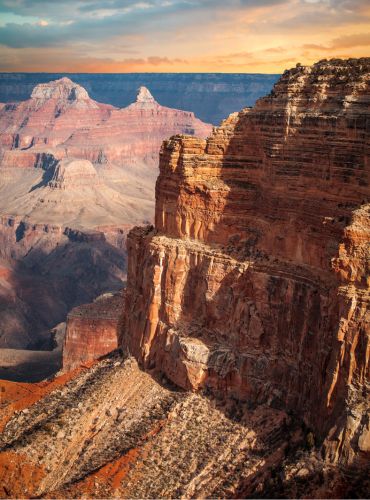
Grand Canyon (USA)
Standing on the rim of the Grand Canyon, you are met with an immense chasm that stretches out as far as the eye can see. The sheer depth and scale of the canyon evoke a profound sense of awe. Here, the key to a sublime experience is to take it slow—whether hiking a section of the rim or simply sitting and gazing into the canyon. Rather than tackling the more intense trails, which can be physically overwhelming, opt for shorter hikes or scenic viewpoints to allow the full impact of the landscape to sink in without exhaustion.

Northern Lights (Scandinavia)
Witnessing the Northern Lights is like watching the sky dance with light. In places like Norway, Sweden, or Finland, the aurora borealis illuminates the night sky with ribbons of green, purple, and blue, creating an almost otherworldly atmosphere. To fully enjoy this sublime experience, it’s crucial to be well-prepared for the cold and sometimes lengthy wait for the lights to appear. Booking a guided tour or ensuring you have comfortable accommodations nearby can enhance the experience, allowing you to revel in the awe without being distracted by discomfort.
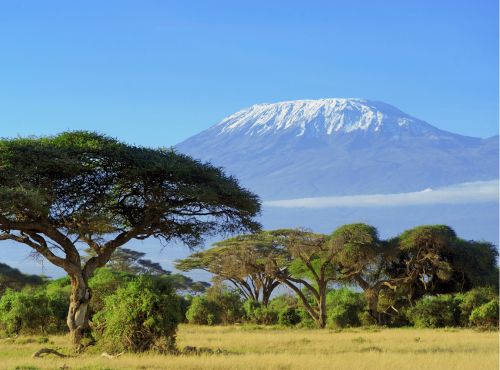
Mount Kilimanjaro (Tanzania)
Climbing Mount Kilimanjaro is an unforgettable encounter with the sublime. The highest peak in Africa, Mount Kilimanjaro, offers breathtaking views, especially at sunrise, when the horizon stretches endlessly beneath you. However, the journey up the mountain is physically and mentally demanding. The key to incorporating this sublime experience without tipping into exhaustion is preparation—ensuring you’re ready for the altitude and physical challenge. The slower pace of the climb, particularly the practice of “pole pole” (slowly, slowly in Swahili), allows climbers to take in the beauty of the mountain without being overwhelmed.
2. Human-Made Sublime
The Human-Made Sublime inspires awe through grand feats of architecture, engineering, and artistic creation. These awe-inspiring works are testaments to human ambition and creativity. However, just as with the natural sublime, it’s important to pace oneself in the face of these overwhelming achievements.
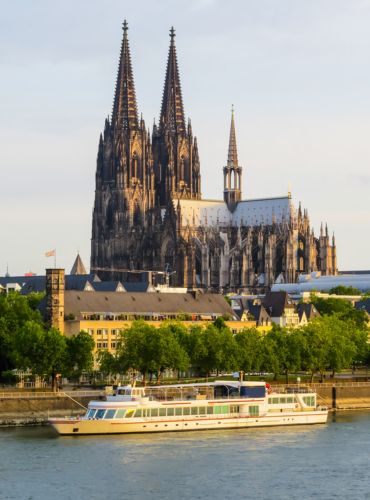
Cologne Cathedral (Germany)
As one of the tallest cathedrals in the world, Cologne Cathedral is a towering masterpiece of Gothic architecture. Standing beneath its soaring spires, you feel both small and awestruck, as if the cathedral itself is reaching up toward the heavens. To avoid sensory overload, it’s best to take your time exploring this majestic structure, perhaps starting with the grand exterior before moving inside to absorb the intricate stained glass windows and vast interior spaces. Taking moments of quiet reflection while inside can help balance the grandeur with personal connection.

Great Pyramids (Egypt)
The Great Pyramids of Giza are among the most iconic symbols of human achievement, representing an ancient world that still inspires wonder today. The sheer size of the pyramids is overwhelming, and standing at their base, one cannot help but feel a sense of awe at the labour and ingenuity that went into building them. However, the desert heat and the vast scale of the site can be overwhelming. To make the most of the experience, consider visiting early in the morning when it’s cooler, and balance your visit with some time in the nearby markets or museums to contextualize the history of the pyramids.

Louvre Grand Salons (Paris, France)
The Louvre Grand Salons house some of the world’s most famous works of art, but it’s the sheer scale of these rooms—filled with masterpieces—that can overwhelm. From Da Vinci’s Mona Lisa to the vast Liberty Leading the People by Delacroix, these salons offer a sublime experience of human creativity. Yet, it’s easy to fall into “museum fatigue” when faced with so many sublime works at once. The best way to experience this is to choose a few pieces to focus on, allowing yourself time to absorb the grandeur of each work rather than rushing through the entire collection.
3. Liminal Sublime
The Liminal Sublime exists at the intersection of nature and human craftsmanship, blending the two to create something uniquely awe-inspiring. These spaces evoke a sense of harmony between human endeavour and the natural world, but as with other forms of the sublime, balance is key to fully appreciating them.

Rice Terraces (Vietnam/China)
The rice terraces of Vietnam and China, particularly those in Sapa and Yunnan, are incredible examples of how humans have shaped the natural landscape for agriculture. These terraces, carved into the hillsides, stretch out like giant green staircases, creating a breathtaking sight. The beauty here comes not just from nature but from the careful cultivation of the land over centuries. To experience the rice terraces without feeling overwhelmed, consider visiting during quieter times, such as early morning or late afternoon, when the light is soft and the crowds are thinner. A guided hike through the terraces allows for a slower, more mindful experience, immersing you in both the human and natural elements.
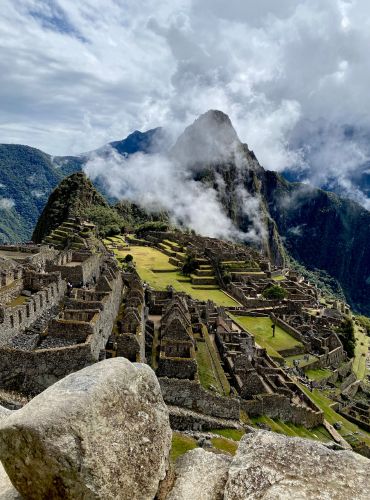
Machu Picchu (Peru)
Perched high in the Andes, Machu Picchu is a striking blend of natural grandeur and human ingenuity. The ancient Inca ruins are set against a backdrop of towering mountains, creating a liminal space where human history and nature converge. While the sheer number of visitors can be overwhelming, the best way to experience Machu Picchu is to take your time, perhaps hiking one of the nearby trails like the Sun Gate for a more peaceful and reflective vantage point. By pacing yourself and allowing moments of quiet contemplation, you can fully appreciate both the natural and human-made elements of this remarkable site.

Petra (Jordan)
The ancient city of Petra is a stunning example of the liminal sublime, where human craftsmanship merges with the natural landscape. Petra’s intricate facades, carved directly into rose-coloured sandstone cliffs, evoke awe not only for their beauty but for the way they seem to emerge organically from the earth. Visiting Petra early in the morning or late in the afternoon, when the light highlights the red rock, creates a more serene experience. As with other liminal sublime sites, taking time to sit and reflect—whether at the famous Treasury or along one of Petra’s quieter trails—allows you to appreciate the harmony between nature and human creation fully.
Incorporating sublime experiences into travel requires a mindful approach that balances awe and wonder with moments of rest and reflection. By being intentional about how we engage with these natural, human-made, and liminal wonders, we can ensure that our travels remain awe-inspiring without getting overwhelmed. Whether standing on the edge of the Grand Canyon, marvelling at the pyramids, or wandering through Machu Picchu, the sublime offers us the opportunity to connect with something far greater than ourselves—an experience that can make our travels truly transformative.
Practical Guide to Incorporating the Sublime into Your Travels
1. Seeking Sublime Destinations
To fully embrace sublime travel, it’s important to be intentional about choosing destinations that evoke awe, whether through natural landscapes or grand human-made structures. While many travellers stumble upon awe-inspiring moments, seeking out places known for their grandeur can lead to more meaningful experiences. Natural wonders like Mount Kilimanjaro, the Grand Canyon, or the Northern Lights are classic examples of sublime destinations, while human-made marvels such as Cologne Cathedral or Petracan evoke similar feelings of awe.
To maximize your experience, consider visiting these destinations during off-peak times when crowds are smaller. Such a choice will allow for a quieter, more personal interaction with the place. For instance, an early morning visit to Machu Picchu offers a serene atmosphere, with fewer tourists and softer lighting that enhances the site’s dramatic beauty. Similarly, finding less-crowded vantage points—like opting for a lesser-known trail or viewpoint at the Grand Canyon—can make the experience feel more intimate and awe-inspiring. By carefully selecting the time and place, you can ensure that your encounters with the sublime are more immersive and transformative.
2. Balancing Awe and Rest
Experiencing the sublime can be emotionally and physically intense, so balancing moments of awe with periods of rest and reflection is vital. Awe can be invigorating, but too much of it—especially without breaks—can lead to a feeling of overwhelm, turning what could be a transformative experience into an exhausting one. For example, after a challenging day of hiking Mount Kilimanjaro or exploring the vast expanse of Petra, consider taking the next day off to rest at a nearby beach or enjoy a relaxing cultural activity.
Combining awe-inspiring moments with gentler experiences can help you absorb the impact of the sublime. Pair a morning of awe-filled exploration with an afternoon of quiet reflection, journalling, or simply sitting in a peaceful setting. This balance allows you to fully process and appreciate the profound beauty or grandeur you’ve encountered without pushing yourself to the point of fatigue. For instance, a challenging hike to a stunning viewpoint can be followed by a leisurely walk through a nearby village, blending physical exertion with rest and cultural immersion.
3. Practical Tips
Incorporating the sublime into your travels is not just about choosing the right destination but also how you approach each experience. Here are three practical tips to help you get the most out of your sublime travel moments:
Be Intentional
Make it a point to include at least one sublime experience in each trip. Whether you’re visiting a natural wonder, a monumental structure, or a liminal space that blends both, seek out opportunities that evoke awe. Don’t feel pressured to pack your itinerary with constant high-intensity experiences; instead, focus on one or two key moments of awe that will leave a lasting impression.
Challenge Yourself
Some of the most awe-inspiring moments come from stepping outside of your comfort zone. Consider hiking to a remote scenic point, visiting a less-visited ruin, or trying an adventurous activity like volcano hiking or hot-air ballooning. These small challenges often lead to the most rewarding and memorable encounters with the sublime, pushing you just enough to feel a sense of accomplishment without overwhelming yourself.
Embrace Small Awe
Sublime experiences don’t always have to come from grand, overwhelming sights. Sometimes, awe can be found in the smaller details—a quiet moment gazing at a beautifully crafted architectural element, the sound of waves crashing on the shore, or the way sunlight filters through the trees in a secluded park. By opening yourself up to these quieter moments of awe, you can enrich your travel experience without needing constant high-impact encounters.
By following these tips, you can incorporate the sublime into your travels in a way that feels both transformative and manageable. Awe-inspiring experiences don’t have to be overwhelming; with the right balance of intensity and rest, you can ensure that your journeys remain memorable for all the right reasons. Whether you’re standing on the edge of the Grand Canyon, marvelling at the architectural beauty of the Great Pyramids, or quietly appreciating a stunning sunset, the sublime can elevate your travels to new heights.
Conclusion
Throughout this exploration of “awful” and “awesome,” we’ve seen how these two words—despite their opposite modern meanings—are both rooted in the profound experience of awe. Awe can be both inspiring and overwhelming, and it’s this duality that lies at the heart of the sublime. Whether we find it in nature’s vast landscapes, human-made marvels, or liminal spaces that blend both, the sublime adds depth and significance to our travels. It reminds us of the sheer scale and beauty of the world, connecting us to something larger than ourselves.
As we’ve discussed, incorporating moments of awe into your travels can make each journey more meaningful and transformative. The sublime has the power to elevate travel experiences, offering moments of wonder that can leave a lasting impression. However, it’s important to strike a balance—too much awe can be overwhelming, tipping the experience from “awesome” to “awful.” By being mindful of how we approach these moments, pacing ourselves, and allowing time for reflection, we can fully enjoy the power of the sublime without feeling drained.
So, as you plan your next trip, consider how you can incorporate the sublime into your travels. Seek out those awe-inspiring destinations, but also leave space for rest and smaller moments of beauty. Embrace the challenge of stepping out of your comfort zone, but don’t forget to pause and appreciate the quieter, subtler forms of awe that might surround you. By doing so, you’ll deepen your connection with the world and create truly unforgettable travel experiences.
What About You?
What have been your most awe-inspiring travel moments? Have you stood in awe of a natural wonder, marvelled at a grand architectural masterpiece, or experienced a profound connection in a liminal space that combines nature and human creativity? I’d love to hear about your sublime experiences and how they’ve shaped your travels.
As you plan your future trips, keep the ideas from this post in mind. Choose destinations that inspire awe, balance those moments with rest, and be open to the grand and the small moments of sublime beauty. Feel free to share your thoughts, reflections, and any tips you’ve found helpful in incorporating the sublime into your own journeys. Travel is not just about seeing the world—it’s about connecting with it on a deeper level.
Further Reading and Resources
These resources offer a mix of deeper philosophical insight and practical information for planning sublime travel experiences.
Related Posts on Only Anton
- Mindful Travel: Discover how the connections between travel and philosophy can inform our journeys and give us mindful insights into cultures.
- Travel and Philosophy: Explore mindful travel: aligning intentions with experiences, avoiding overplanning, and embracing spontaneity for a meaningful journey.
Books on the Sublime
- A Philosophical Enquiry into the Origin of Our Ideas of the Sublime and Beautiful by Edmund Burke (1757): This foundational text explores the nature of the sublime and its connection to fear, beauty, and emotion. It is a great resource for a deeper understanding of the sublime’s emotional impact. Look for it online, at your local library, or buy your copy here.
- Critique of Judgment by Immanuel Kant (1790): Kant’s exploration of aesthetics, including his theories of the sublime, offers a more structured approach to understanding how we experience awe in nature and art. Look for it online, at your local library, or buy your copy here.
- The Sublime: A Reader in British Eighteenth-Century Aesthetic Theory, edited by Andrew Ashfield and Peter de Bolla (1996): This anthology collects key writings on the sublime, offering a broader perspective from various influential thinkers of the time. Check your local library, find it online, or buy your copy here.
- On the Heights of Despair by Emil Cioran (1934): Though not strictly about the sublime, Cioran’s meditations on despair, vastness, and human insignificance echo many of the themes central to the experience of the sublime. Read it online, at your local library, or buy a copy here.
Articles and Encyclopedic Entries
- Wikipedia entry on the Sublime: A helpful starting point for understanding the various philosophical interpretations of the sublime. Find the entry here.
- Stanford Encyclopedia of Philosophy: Aesthetic Experience: A more detailed and academic exploration of aesthetic experience, including the sublime. Find the article here.
- “The Experience of Awe” by Keltner and Haidt (2003): This academic article examines the psychological and emotional effects of awe, drawing connections between the sublime and human well-being. Access to the article can be found here.
- “Awe,” John Templeton Foundation: An article about the science and psychology of “this most mysterious and mystifying emotion.” Read the article here.
- “28 Places to See Before You Die—the Taj Mahal, Grand Canyon and More,” Smithsonian Magazine (January 2008): “A ‘life list’ of places to visit before taking the ultimate trip to the great beyond.” Find the article here.
Websites
- Atlas Obscura: A fascinating resource for discovering awe-inspiring, off-the-beaten-path destinations worldwide.
- UNESCO World Heritage Sites: A directory of natural and cultural sites around the globe that often evoke sublime experiences.
- National Geographic Travel: A venerable and reputable site for finding information about breathtaking destinations.




